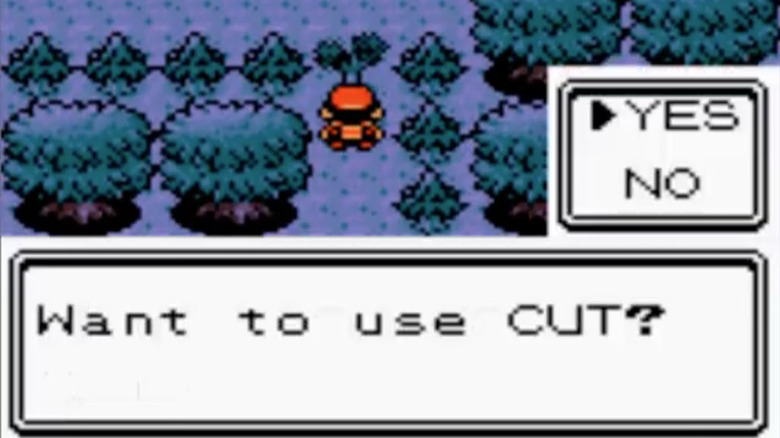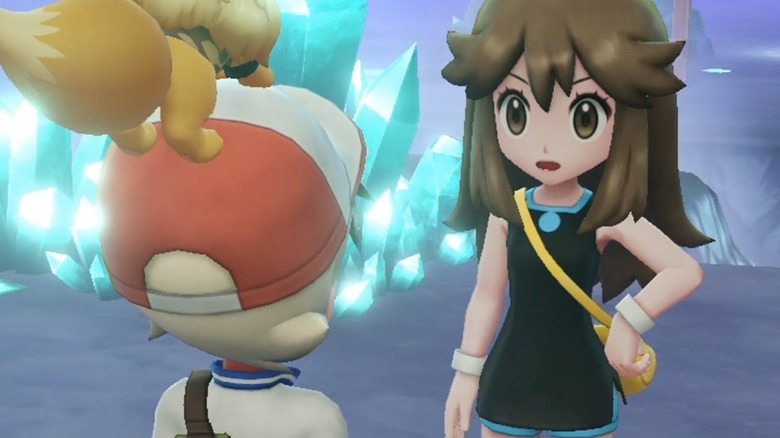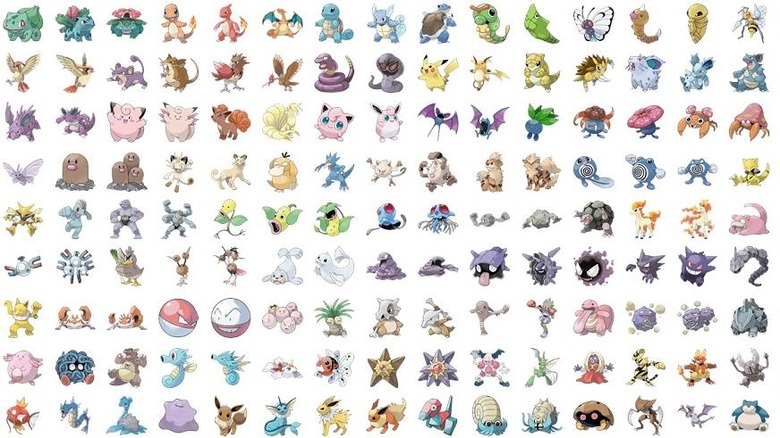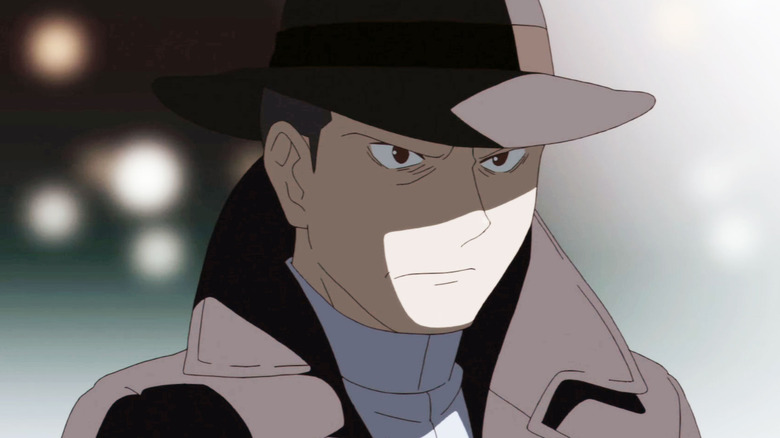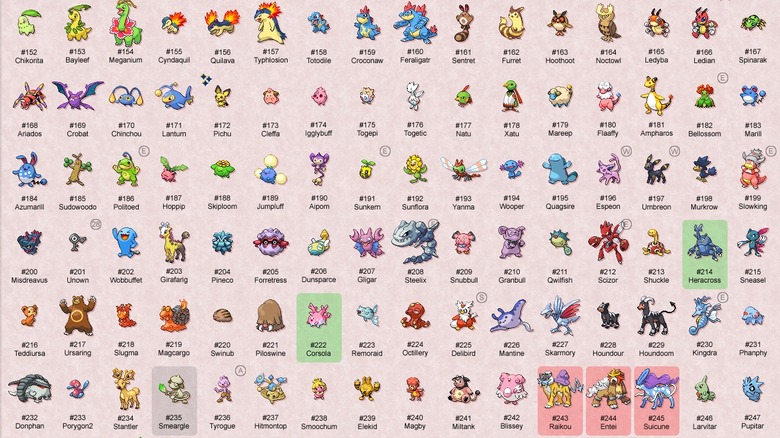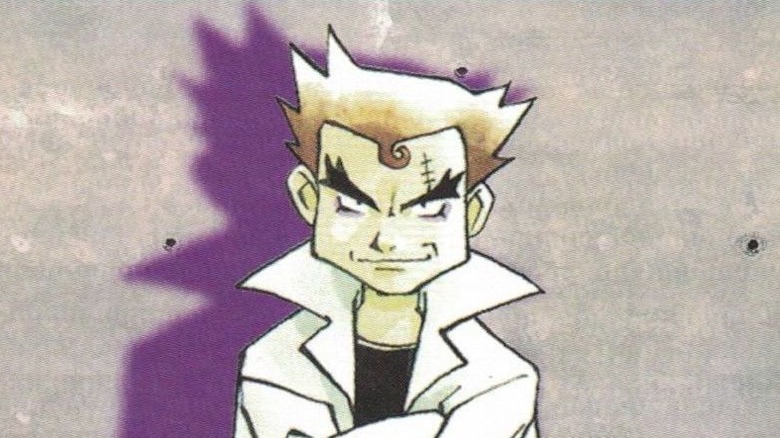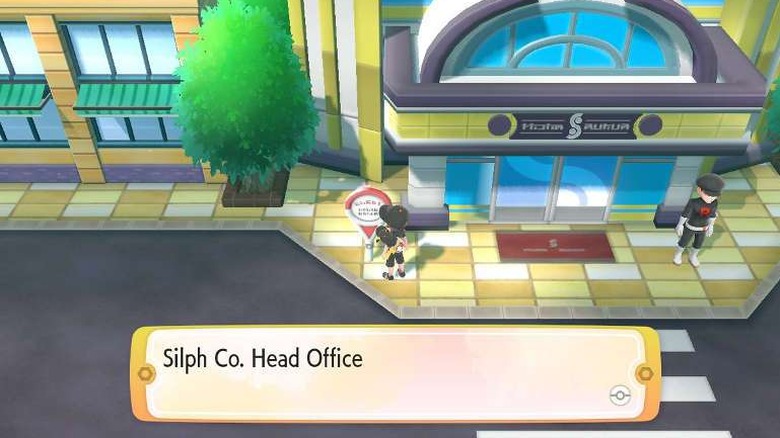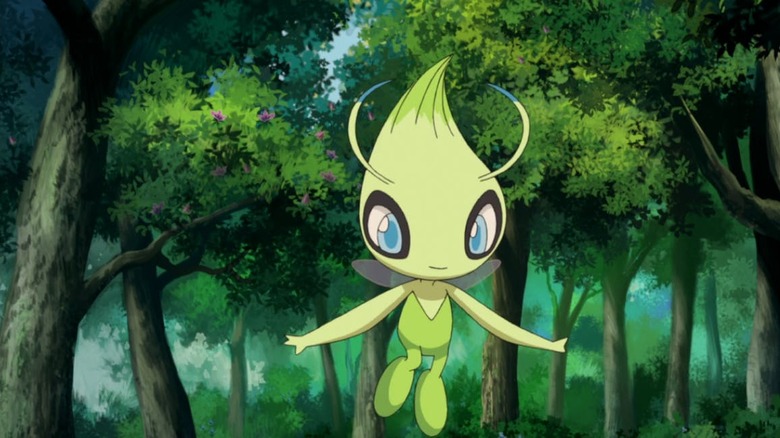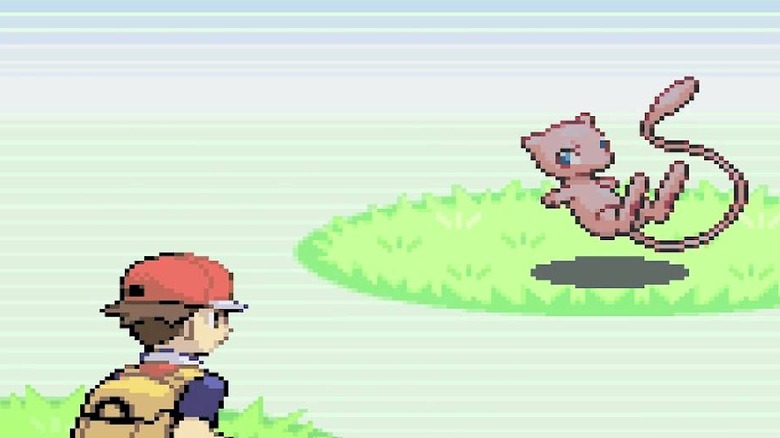Characters That Were Cut From Pokemon Games And Nobody Noticed
A lot of work goes into making a Pokémon game, even more than most gamers prabably realize. Before you can catch 'em all, someone else has to design 'em all. Each new installment has many new concepts, which add up over the years. However, as with many other games, things also end up getting dropped during development. Over time, the Pokémon franchise has seen its fair share of changes in terms of gameplay and overall aesthetics; Pokémon have gained and lost Mega Evolutions, and the Let's Go series did away with the kind of randomized wild Pokémon battles that had become a series trademark.
What fans may not know is just how many characters and creatures have been removed from their favorite games before they were completed. Some of these were available in early builds of the game or were part of limited-time events sponsored by Nintendo, which occasionally resulted in incongruities between the games' marketing and the final products. It's time to look at some of these lost Pokémon characters.
The original female Trainer
The cover art of Japan's original strategy guide for Pokémon Red and Green featured the image of the familiar player character (Red) and his rival (Blue). However, joining them on this cover is a mysterious brown-haired female trainer. Though she was used in promotional material, she never appeared in the first generation of Pokémon games.
A character with a similar design to this female trainer was eventually introduced to Pokémon media as a rival to series protagonist Red in the Pokémon Adventures manga, where she was named Green. Interestingly, this design was also somewhat revived for the remakes of Gen 1, Fire Red and Leaf Green (with the default character name Leaf). Green still wouldn't make her first proper, named appearance until 2018's Pokémon: Let's Go — Eevee! and Pikachu! In these games, she would challenge the player character to a battle after he's captured Mewtwo and beaten the Pokémon League's Elite Four, making this incarnation of Green more of a boss character.
Of course, Pokémon Crystal eventually introduced a playable female trainer, but it's cool to think of how we may have gotten that option much sooner.
The Gen 1 that never was
In early 2019, Pokémon fan-site Helix Chamber came into possession of an early Japanese beta version of Capsule Monsters, the game that would become Pokémon Red and Green. Polygon's coverage of this find noted the presence of some of the game's "original NPC designs, including a robot-looking dude, the player's rival and his little brother, and a bratty gym leader." Even more exciting were the many unused monster designs contained in the beta. Some of these seemed like early versions of the eventual Gen 1 line-up, like Wartortle's original final form, Totartle. There were also some Pokémon that didn't resemble anything from the eventual games, like a Mechagodzilla-looking monster and one truly bizarre design that was a straight-up sentient balloon.
In possibly the leaked beta's most interesting detail, one of the unused Pokémon, dubbed Guardia by Helix Chamber, seemed to confirm a long-held fan theory about Gen 1 Pokémon Cubone. Though Guardia's sprite can only be seen from the back, it greatly resembles Cubone's evolved form, Marowak, holding some kind of smaller Pokémon in its arms.
As Polygon goes on to explain, "Fans have long theorized that Cubone ... is actually [fellow Gen 1 Pokémon] Kangaskhan's baby all-grown-up, donning the skull of its dead mother to hide its tears." It's a morbid theory that has gained some traction over the years, but the general appearance of Guardia would seem to indicate that this connection may have been actually considered during the game's early development days.
Giovanni escaped from justice ... and Gold & Silver
Giovanni is the ruthless leader of Team Rocket, the evil band of terrorists from the Pokémon universe. Though he's defeated multiple times over the course of the first generation, his presence is still widely felt through the events of Gold, Silver, and Crystal, with many of the remaining members of Team Rocket singing Giovanni's praises and hoping for his grand return. That may be because he was originally supposed to make a surprise return during the plot of those games.
Thanks again to the folks over at The Cutting Room Floor, we know that there was an unused sprite for Giovanni in the code for Pokémon Gold and Silver's demo. This demo was only publicly displayed once, at Nintendo's Space World trade show in 1997, but was eventually found and had its assets dumped online by an anonymous user in the spring of 2018. This seems to suggest he would have made some kind of physical appearance in the Rocket-related quests of Gen 2.
Supporting this theory is the fact that Giovanni eventually made an appearance in the Gen 2 remakes, HeartGold and SoulSilver. In a limited time event, players with a certain version of legendary Pokémon Celebi could trigger a time-travel side-quest where they battle Giovanni. It is also heavily implied that Giovanni is the father of Silver, the rival character from Gen 2 (a connection that was eventually made explicit in the Pokémon Generations anime).
The Gen 2 that never was
Elsewhere in the Space World 1997 demo, tons of unused Pokémon sprites were found buried in the early build of what would eventually become Gold and Silver. Fans were excited and somewhat bummed to see all of these creatures that they never knew they missed out on, with one person making fan art of a few unused designs and demanding, "Oh Game Freak, why have you forsaken me?"
Among the many wholly unused Pokémon designs, Game Rant mentions, "Farfetch'd has an evolved form called Flygon, and there is a baby version of Meowth called Meowsy, along with a baby version of Vulpix called Trifox." While "Flygon" wouldn't be used as the name for a Pokémon until Gen 3, the concept of Baby Pokémon was first introduced in the second generation of the series. They were essentially pre-evolution versions of beloved monsters like Pikachu and Jigglypuff. These baby Pokémon would hatch from eggs that could be given to your character by NPCs or made the old-fashioned way, by dropping off two of your Pokémon at the Pokémon Day Care and letting nature run its course.
(Come to think of it, Gen 2 taught many young gamers about the Birds and the Beedrils.)
Imposter Oak snuck past us all
Yet another interesting character found in the Space World 1997 demo for Gold and Silver is a sprite identified as "Imposter Oak." This character has been featured in the Pokémon Trading Card Game, an apparent villain who masquerades as beloved Pokémon expert and Pokédex inventor Professor Oak. While it's unclear why the character was cut from Gold and Silver, one can assume it may have been part of one of Team Rocket's elaborate plots, considering Imposter Oak's appearance in the Team Rocket trading card decks.
Though Imposter Oak didn't make it into the video game series, he has still made a splash in other Pokémon media. In addition to his trading card appearances, he made something of an appearance in the Pokémon Adventures manga when Sabrina's Kadabra used its psychic abilities to appear to Adventures hero Red as a vision of Professor Oak. The anime also eventually included a version of the Imposter Oak (in the episodes "Will the Real Oak Please Stand Up?" and "A Faux Oak Finish!"), but this version was Team Rocket agent James in a disguise.
The (original?) Chief of SILPH
One of Generation 1's story quests involved infiltrating the offices of SILPH Co. in Saffron City and rescuing the tech company's employees from the clutches of Team Rocket. After a battle with Team Rocket's Boss, Giovanni, the player is thanked by the President of SILPH. He awards the player with the Master Ball, the Poké Ball that catches any Pokémon without fail.
If this dropped character is any indication, though, the President of SILPH may have originally been in on Rocket's plans. There's not a ton to go on, but The Cutting Room Floor notes that a trainer character named SILPH's Chief is still present in Red and Blue's code, which implies that the character was meant to be battled at some point in the game. In fact, at one point, one of the Team Rocket Grunts in Celadon City is heard saying, "CHIEF! We just shipped 2000 POKéMON as slot prizes!" This remaining reference could be taken in one of two ways: either the Grunt is calling Giovanni "Chief" instead of the more common "Boss," or he's letting the SILPH President know that Rocket's plans are proceeding as scheduled.
Why this character and its related battle were cut is unclear, but it was likely done in an attempt to streamline the plot of the game. Giovanni is already enough of a challenge without having to add a whole corporate conspiracy to the mix.
Pokémon Crystal's elusive Celebi
This time-traveling Legendary Pokémon known as Celebi has been one of the most elusive creatures in the history of the franchise. It was essentially the Mew of the second generation. Much like Mew in Gen 1, Celebi was only officially available to Pokémon Crystal players through a special event ... and only in Japan.
In 2001, select events for the mobile phone-based Pokémon Mobile System GB (a peripheral not released outside of Japan) would give Crystal players a special Poké Ball called the GS Ball, an item that was also featured in a story arc on the Pokémon anime. Players could then journey to Johto's Ilex Forest Shrine and place the GS Ball within it to trigger an encounter with Celebi. Without the Pokémon Mobile System GB and its related in-game events, players outside of Japan could not receive the GS Ball. Therefore, outside of using GameShark cheats, they had no way of unlocking the Celebi encounter.
It wasn't until Crystal was released for the Nintendo Virtual Console in 2018 that American players could catch Celebi through legitimate means. After defeating the Elite Four and Pokémon League Champion Lance, players could return to Goldenrod City's Pokémon Center and finally receive the GS Ball.
Mew is always so far away
Mew was the hardest of the original 151 Pokémon to catch. The only official way to get Mew during Gen 1 was through participating in special limited-time Nintendo events and having the character physically added to your game cartridge. Otherwise, players had to resort to using a GameShark or exploiting increasingly-complex glitches to unlock the character from inside the game's code. Mew's elusive nature didn't end with Gen 1, however.
When Pokémon Emerald was released, players could catch Mew on Faraway Island. There was just one major catch: this mysterious island could only be found using a key item called the Old Sea Map, which was only given to players during (you guessed it) a Japan-only event. Yet again, players in the US had to resort to cheats to participate in this secret battle. Otherwise, Mew would simply stay hidden within the game, present but inaccessible.
In a curious move, while Mew was included in Emerald, it was strangely absent from the actual Gen 1 remakes, Leaf Green and Fire Red. However, The Cutting Room Floor has uncovered an overworld sprite for Mew in the code of those games, along with sprites for a few other legendary Pokémon who aren't featured in Fire Red and Leaf Green. This would seem to indicate that, at some point in the remakes' development, Mew was intended to be encountered in a manner similar to the three Legendary birds of Gen 1.

